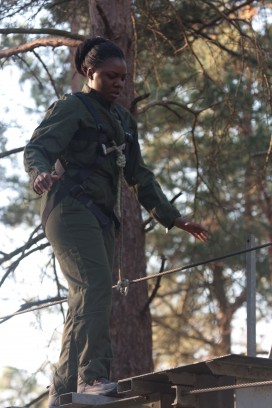by Juvena Tan
Entrepreneurship is in these present times a very hot topic, actively initiated in both developed and emerging markets, and in large corporations and small start-ups. The idea of identifying opportunities, launching and running businesses and making profits have thrilled, awed or daunted many individuals and organizations alike.
Personally, entrepreneurship had entered my life when I was in my mid-twenties. At the time, fresh from a 9 to 5 job, I wanted to do something exciting with my life, I did freelance designing, multi-level marketing, lecturing in a private art school, all which enabled me to know my own desires and strengths, until my family had a chance to take over a creative design services business in 2004 and I decided to join in. It was to me the turning point that led me to the path of being an entrepreneur. Especially at that time, we had little knowledge of or experience in running a business, and we had to learn as went go along. That gave me an understanding that sometimes opportunities come and we should grab them and move forward and that we do not have to wait for things to be perfect in order to take the leap.
Over the years, I have come across stories and ideas of entrepreneurship on the micro and macro level. Working with small business owners in my day-to-day operations, I witnessed the creativity, determination and most importantly, the drive in each of them, and that had inspired and cultivated in me the spirit of perseverance. In my opinion, this is something very necessary in starting a business from scratch. I also came across business units in large corporations that work like entrepreneurial teams and later in the Global MBA Entrepreneurship course I learned that this is described with the term ‘intrapreneur’. I read an article published by Forbes about the traits of being an intrapreneur and idea of not being afraid of failure really resonated with me (you can find the link here). This concept of intrapreneurship also links to my post-MBA goal to work in France. As a foreigner, it takes considerable time to understand the market and to build a strong personal network, so it would make sense for me to join a large organization that places high values on these entrepreneurial traits, where I can make use of my background add value to the company.
As part of the course, we completed an entrepreneurship project, in which groups wrote full business plans for their collective entrepreneurial ventures. I joined the luxury bag rent and borrow team because I wanted to move into the fashion and luxury industry, so I took it as a chance to learn, research and delve more into this industry. I knew that along the way, I would discover new insights about luxury brands, which could be useful for my career and my portfolio. As a way forward, I am considering to propose this project to my future company as part of an extension of their services, just like what the owner of Papyrus Trading, Robert Keane did, when he moved to Microsoft and then went on to found Vistaprint. I am motivated by his story of turning a failed venture into an advantage inspired that that he could capitalize on this later in his career.
In this project, I learned to look at the creation of an idea and how to bring it forth, at least to the stage of formulating the business plan. It is an interesting contrast to what I had done in the past, because now I am exposed to the formal process, in an academic teaching, of researching the market, critically analyzing the idea, setting objectives, financial forecasting etc. Even though finance is not a strong skill set for me, I take it as a learning experience, much like having to pitch for funding in front of a jury panel. This compelled me to think of how the business can generate value to investors, and since I was working on the marketing strategy with in the project, I could exercise my knowledge in this area to generate value for our end consumers. This was something which I find very interesting and that I really enjoy. I also had the opportunity to experiment with branding, and came up with the enterprise name, Borrow My Luxe, and the design concepts.
There are other learning experiences that I gained from this project, such as team building and time management. All 5 of us have different personalities, working styles, expectations and time schedule, so coming together to work on this project was not easy at all. But despite our busy schedules, we managed to accomplish what was needed in the end and everyone agreed to some extent that it had been fun in the end. I also observed from this experience the importance of motivating the team throughout the entire process, as it took us close to 6 months to complete from the initial team formation to the final presentation. Without vision and shared goals, it is hard to get the team to perform at the optimal level.
Outside of the class, I look forward to taking the lessons learned and applying them to my capstone project, which will take place in Rwanda. The capstone project is a 2 month consulting project that is like the final thesis for the Global MBA. In Rwanda I will work with local entrepreneurs to improve their business or to help them to set up their ventures. It will be a test of my academic training and previous experiences, which I am sure will help prepare me for the challenges ahead.
All in all, the lessons learned in class, the case studies, and the management of the project had been enriching for me. It also brings to mind a saying has always stuck with me, “nothing is a wasted effort, it is always a learning experience.”
| APPLY ONLINE |












